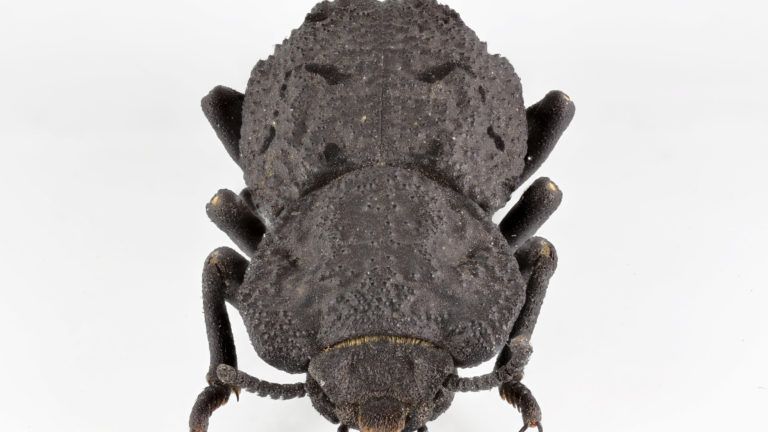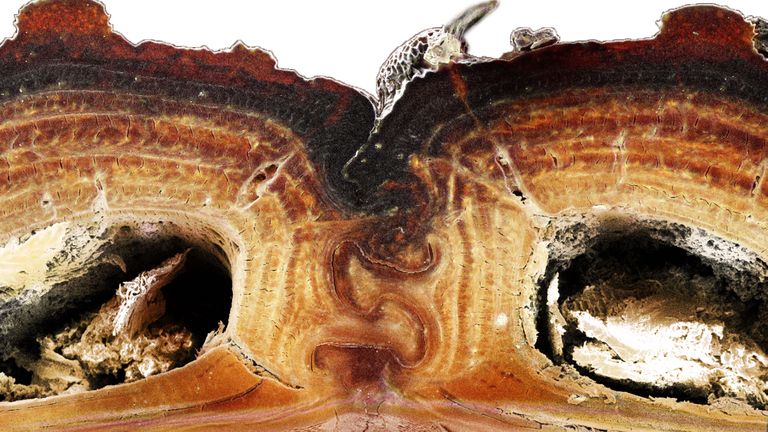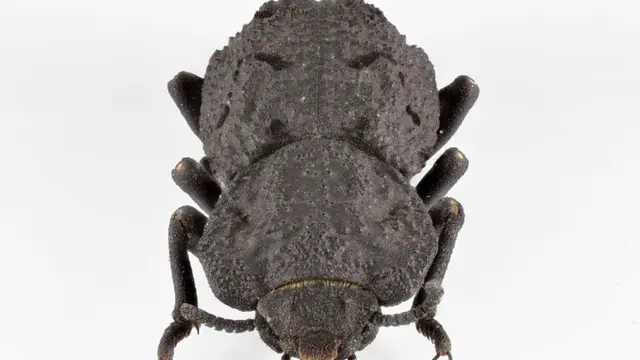The key to making stronger buildings and planes could lie in the anatomy of a crush-resistant insect that can survive being run over by a car, scientists have found.
To understand the secret behind the impressive strength of the inch-long diabolical ironclad beetle, researchers tested how much squishing it could take - and discovered it could handle about 39,000 times its own weight.
The study, led by engineers at the University of California, Irvine (UCI) and Purdue University, found the insect has two armour-like elytron that meet at a line, called a suture, which runs through the abdomen.

Image:The species is native to Southern California. Pic: Jesus Rivera/UCI
This unusual structure is layered and pieced together like a jigsaw, said Purdue civil engineer Pablo Zavattieri, who was part of a group of researchers that used CT scans to inspect the insect and run it over with a car.
The exoskeleton is thought to be one of the toughest structures known to exist in the animal kingdom.
Professor Zavattieri said that when compressed, it fractured slowly instead of snapping simultaneously.
"When you pull them apart, it doesn't break catastrophically. It just deforms a little bit," he said.
"That's crucial for the beetle.
"This work shows that we may be able to shift from using strong, brittle materials to ones that can be both strong and tough by dissipating energy as they break. This beetle is super tough."
The findings could inspire stronger structures and vehicles made with materials such as steel, plastic and plaster.
That's because engineers currently rely on pins, bolts, welding and adhesives to hold everything together - techniques that are prone to degrading.

Image:The curvy line in the middle of the body is key to its strength. Pic: Jesus Rivera/UCI
Diabolical ironclad beetles are commonly found in Southern California's woodlands and can withstand pressure such as bird pecks and animal stomps.
Other local beetles were crushed by a third of the weight it could hold, previous research had found.
The study, published in Nature, is part of an $8m project funded by the US Air Force to explore how the biology of creatures such as mantis shrimp and bighorn sheep could help develop impact-resistant materials.
Brown University evolutionary biologist Colin Donihue, who was not involved in the study, said it was the latest effort to solve human problems with secrets from the natural world.
Velcro, for example, was inspired by the hook-like structure of plant burrs, while artificial adhesives took a page from super-clingy gecko feet.
Professor Donihue said endless other traits found in nature could offer insight, saying: "These are adaptations that have evolved over millennia."
 简体中文
简体中文

